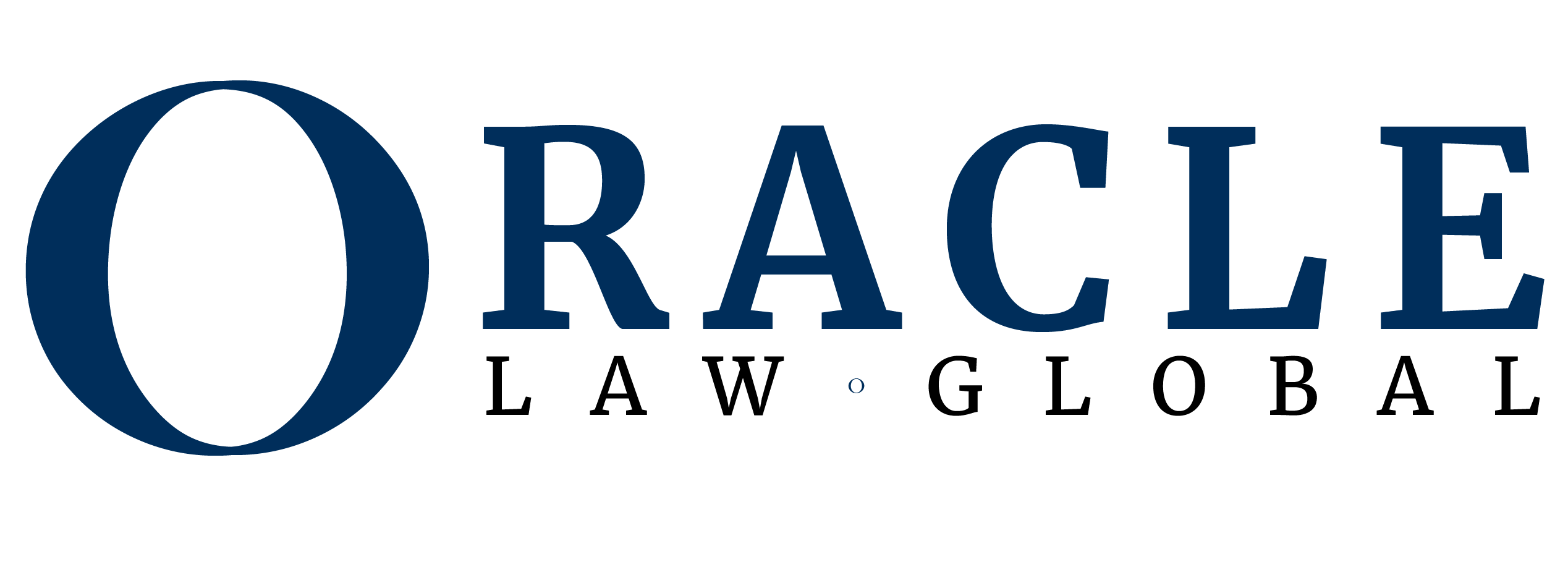Crypto and Digital Assets: Legal Developments and Market Trends in the EU
Have you got a question?
A. Introduction
The digital transformation of capital markets has brought about unprecedented opportunities for innovation, particularly through the use of transformative technologies such as Distributed Ledger Technology (DLT) and blockchain. These technologies have the potential to significantly enhance efficiency, reduce costs, and create new business models. However, they also present unique regulatory challenges, particularly in the context of crypto-assets, which have seen exponential growth in both complexity and market value.
In response to these developments, the European Union has introduced the Markets in Crypto-Assets Regulation (MiCAR), a comprehensive legal framework designed to regulate the issuance, trading, and custody of crypto-assets. MiCAR, formally adopted as Regulation (EU) 2023/1114, entered into force on June 29, 2023, and will become fully applicable by December 30, 2024. This regulation represents a significant milestone in the EU’s efforts to create a harmonized regulatory environment for digital assets. This article provides an in-depth analysis of MiCAR, its implications for the crypto market, and the broader legal developments shaping the digital asset landscape in Europe.
1. The Legal Framework for Crypto-Assets: MiCAR
Scope and Objectives of MiCAR establishes a unified regulatory framework for crypto-assets across the EU, aiming to ensure investor protection, market integrity and legal certainty for market participants. The regulation applies to crypto-assets that are not already regulated as financial instruments under the Markets in Financial Instruments Directive II (MiFID II). This includes utility tokens, asset-referenced tokens (ARTs), and e-money tokens (EMTs). However, crypto-assets that qualify as financial instruments, such as security tokens, fall outside MiCAR’s scope and are instead governed by MiFID II – an existing EU framework that takes a notably different approach compared to regimes in countries like the US or Singapore.
The regulation introduces precise definitions for different types of crypto-assets, ensuring clarity and consistency in their regulation. For example, Article 3(1)(5) of MiCAR defines a crypto-asset as a digital representation of value or rights that can be transferred and stored electronically using DLT or similar technology. Similarly, Article 3(1)(6) defines asset-referenced tokens (ARTs) as crypto-assets that maintain value stability by referencing other assets, such as commodities or fiat currencies, while Article 3(1)(7) defines e-money tokens (EMTs) as crypto-assets pegged to the value of a single fiat currency, functioning similarly to electronic money.
Crypto-assets represent one of the most prominent applications of Distributed Ledger Technology (DLT). According to Article 3(1)(5) of MiCAR, a crypto-asset is a digital representation of value or a right that can be electronically transferred and stored using DLT or similar technology. MiCAR classifies crypto-assets into three categories: asset-referenced tokens, e-money tokens (commonly known as stablecoins), and utility tokens.
-
Asset-Referenced Tokens Under Article 3(1)(6) of MiCAR, an “asset-referenced token” refers to a crypto-asset that is not classified as an e-money token and whose value stability is maintained by referencing another asset or right, or a combination thereof, including one or more official currencies.
-
E-Money Tokens Article 3(1)(7) of MiCAR defines an “e-money token” as a crypto-asset designed to maintain a stable value by referencing the value of an official currency.
-
Utility Tokens A “utility token,” as specified in Article 3(1)(9) of MiCAR, is a crypto-asset intended solely to provide access to a good or service offered by the issuer.
2. Legal Implications for Market Participants
Each type of token entails specific legal consequences for market participants under MiCAR. Crypto-assets that qualify as financial instruments under the definition provided in Directive 2014/65/EU (MiFID II), often referred to as security tokens, fall outside the scope of MiCAR (as noted in Recital 3 of MiCAR). Therefore, there is a complementary relationship between crypto-assets and tokenized financial instruments.
In light of this, the EU legislator has updated the definition of financial instruments in a consolidated version of MiFID II, effective March 28, 2024. Article 14(1)(15) of MiFID II now includes instruments listed in Annex I, Section C, encompassing those issued via DLT. However, traditional cryptocurrencies like Bitcoin and Ethereum fall under the scope of MiCAR rather than MiFID II.
MiCAR introduces stringent licensing requirements for Crypto-Asset Service Providers (CASPs), including exchanges, custodians, and wallet providers. CASPs must obtain authorization from their national competent authority, such as BaFin in Germany, and comply with ongoing operational and prudential requirements. These include capital requirements under Article 35 of MiCAR, safeguarding of client assets under Article 36, and transparency and disclosure obligations under Article 17. MiCAR also establishes a clearer regulatory framework for traditional banks, potentially encouraging them to expand into crypto-related services with greater compliance certainty.
The regulation also establishes a phased implementation timeline. Most provisions of MiCAR will become applicable on December 30, 2024, while provisions specific to ARTs and EMTs issued by non-credit institutions will take effect on June 30, 2024. This phased approach allows market participants time to adapt to the new regulatory requirements.
3. The Role of Distributed Ledger Technology (DLT)
DLT, as defined in Article 3(1)(1) and (2) of MiCAR, refers to a system that records transactions across a distributed network of nodes, synchronized through a consensus mechanism. This includes blockchain technology, which is widely used for issuing and transferring crypto-assets. The regulation recognizes the transformative potential of DLT, emphasizing its ability to enhance efficiency, reduce costs, and enable new business models.
The Financial Market Digitalization Act (FinmadiG), proposed by the German Federal Ministry of Finance, complements MiCAR by promoting the use of DLT in financial markets. The FinmadiG highlights the potential of DLT to streamline the issuance and settlement of securities, reducing reliance on intermediaries and enhancing market efficiency.
4. The Legal Framework for Electronic Securities
The introduction of the Electronic Securities Act (eWpG) in 2021 marked a significant step by the German legislator in establishing a legal framework for the issuance of electronic securities under German law. Initially, the eWpG covered only bearer instruments, such as bearer bonds, including traditional bonds, covered bonds, structured products, convertible bonds, and investment fund units as defined in Section 95 of the German Capital Investment Code (KaGB). However, it did not extend to registered securities or order securities.
Through the Future Financing Act In 2023, the Future Financing Act (ZuFinG) amended the eWpG to allow for the issuance of shares through registration in an electronic register. Registered shares can now be issued either as central register securities under Section 4(2) of the eWpG or as crypto securities under Section 4(3) of the eWpG. Conversely, bearer shares must always be issued as central register securities.
Unlike central register securities, crypto securities are recorded in a crypto securities register. According to Section 16(1) of the eWpG, this register must be maintained using a tamper-proof recording system that logs data chronologically and protects it from unauthorized deletion and subsequent modification. While such registers are commonly managed using DLT, there is no mandatory requirement to use DLT for maintaining a crypto securities register.
Entities eligible to manage a crypto securities register must hold the necessary authorization under Sections 1(1a) sentence 2 No. 8 and 32(1) sentence 1 of the German Banking Act (KWG). Issuers of crypto securities are required to appoint and publicly name an authorized register manager. If no such appointment is made, the issuer is considered the register manager and must obtain the relevant authorization from BaFin to provide this financial service.
Crypto securities register managers are only necessary for issuances under the German eWpG. For tokenized securities that do not fall under the eWpG, such as registered bonds, there is no obligation to maintain a crypto securities register as per eWpG requirements. The register manager is responsible for ensuring the proper maintenance of the crypto securities register (Sections 18(2) to 18(5) of the eWpG) and safeguarding the confidentiality, integrity, and authenticity of the register data (Section 7 eWpG).
The register manager must also ensure that all requirements for the formal recording of the securities, including the publication of terms and conditions on a website and, in case of amendments, a re-publication with a timestamp, are met (Section 4 of the eWpRV).
Previously, register managers were required to publish selected information regarding crypto securities in the Federal Gazette. However, under the current draft of the Second Future Financing Act (ZuFinG II) proposed by the German Federal Ministry of Finance, Section 20 of the eWpG is set to be repealed. This amendment aims to eliminate the much-criticized and outdated publication requirement in the Federal Gazette before November 1, 2025.
Several high-profile issuances have demonstrated the potential of crypto securities. For example, in 2024, Siemens issued a €60 million blockchain-based bond as a crypto security under the eWpG. Similarly, KfW, the German development bank, issued its first blockchain-based digital bond in May 2024. These issuances highlight the growing adoption of DLT in corporate finance and capital markets.
5. Market Developments and Challenges
One of the key challenges facing the crypto-asset market is the lack of highly liquid secondary markets. While platforms such as Euroclear’s D-FMI and Clearstream’s D7 have made significant strides in integrating DLT with traditional market infrastructure, further development is needed to achieve widespread adoption. The lack of liquidity poses a significant barrier to the mainstream acceptance of digital assets, as investors require access to robust secondary markets to trade and manage their holdings effectively.
MiCAR does not address the regulation of Decentralized Autonomous Organizations (DAOs), which operate without centralized control. This represents a significant gap in the regulatory framework that should be addressed in order to achieve a clear and transparent regulatory framework as highlighted in Recital 22 of MiCAR. DAOs, which are often used to manage decentralized financial services and applications, present unique challenges for regulators, particularly in terms of accountability and governance.
B. Conclusion
MiCAR and the eWpG represent significant steps forward in the regulation of crypto-assets and electronic securities. However, the rapid pace of technological innovation necessitates ongoing regulatory adaptation. By fostering a balanced approach that promotes innovation while ensuring investor protection and market integrity, the EU is well-positioned to lead the global digital asset economy. As the market continues to evolve, stakeholders must remain agile and proactive to harness the full potential of these technologies.
Book a call back
Share this article
Got a question?
Please complete this form to send an enquiry. Your message will be sent to one member of our team.
Related posts

Contract Law Consultancy with Oracle Solicitors
In today’s business world, contracts are the foundation of every successful commercial transaction. Whether you are entering into agreements with clients, suppliers, or

Google Faces £6.6B Class Action Lawsuit in the UK
In the financial heart of London, a legal battle has erupted that could have long-term effects on the world of online advertising. Last

Renewable Energy Development in Albania: Legal Framework and Emerging Opportunities
1. Introduction Albania has established itself as a frontrunner in renewable energy development within South-East Europe, leveraging its abundant natural resources and a

AI: Innovation in Aviation
The sky is no longer the limit — it’s just the beginning. I. Introduction Artificial Intelligence (AI) is rapidly becoming integral to aviation,

